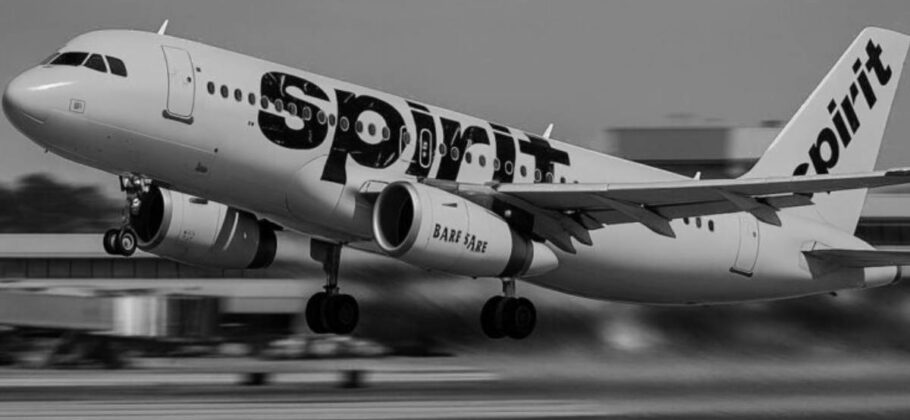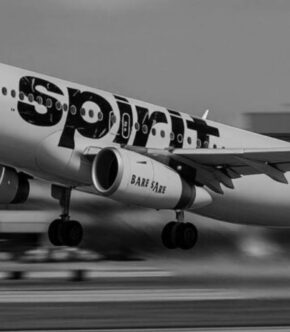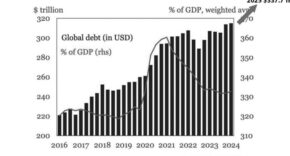For two decades, Spirit Airlines stood as the loudest champion of cheap flying in America. It was the airline everyone loved to complain about but secretly booked when the price was right. Today, that once-proud pioneer has become a symbol of everything wrong with the low-cost airline industry. Two bankruptcies in less than a year, massive layoffs, and a shrinking route map have raised serious doubts about whether the ultra-low-cost model can survive in the modern aviation landscape.
Spirit’s story is no longer just about one struggling company. It is about an entire business model under siege — one that was built on bare-bones simplicity and low fares but now faces a brutal squeeze from both rising costs and powerful competitors.
From revolutionary to reeling
When Spirit first switched to its ultra-low-cost model in 2006, it was a revelation. Travelers could fly for next to nothing if they were willing to forgo frills. The airline famously charged for everything from seat selection to carry-on bags, earning the nickname “the nickel-and-dime airline.” For a while, it worked. Spirit posted profits every year from 2007 until the pandemic in 2020. But that success story has collapsed spectacularly.
After emerging from its first bankruptcy in March 2025, Spirit tried to reinvent itself. It rolled out new seating, free Wi-Fi, complimentary snacks, and even a priority-boarding tier in an attempt to attract wealthier travelers. The effort failed quickly. By August, the Florida-based airline was back in bankruptcy court. This time, it sought a $475 million debtor-in-possession loan to keep its planes flying, along with a $150 million cash injection from its aircraft lessor AerCap. The court also approved Spirit’s request to reject 27 aircraft leases, an early step in a painful downsizing.
“We are pleased to have reached another significant milestone in our restructuring, which represents continued progress toward securing a successful future for Spirit,” said CEO Dave Davis, striking an optimistic tone as he confirmed that $200 million of the financing would be available immediately.
Behind the cautious optimism, Spirit’s financial condition remains dire. The airline lost $246 million in the second quarter of 2025, while revenue fell 20 percent due to weaker passenger demand. Its operating expenses climbed to 118 percent of revenue, compared with 84 percent before the pandemic. Spirit has now announced plans to furlough about 1,800 flight attendants, cut around 40 routes, and halve its fleet by removing nearly 100 aircraft.
The squeeze from both sides
Spirit’s collapse has become a textbook example of what happens when a low-cost carrier loses its cost advantage. Inflation, higher wages, and aircraft leasing costs have pushed expenses sharply upward, while major airlines like Delta, United, and American have muscled into the discount space with their own “basic economy” fares.
David Neeleman, the founder of JetBlue and Breeze Airways, put it bluntly. “The proliferation of basic economy was the thing that really hurt,” he told Reuters. United, Delta, and American now sell stripped-down tickets that mimic the pricing of budget airlines but come with the reliability, loyalty programs, and route networks of the big three. United’s chief commercial officer, Andrew Nocella, described the program as a “home run.”
Meanwhile, the majors have deployed larger planes and higher-capacity schedules on key domestic routes, cutting directly into Spirit’s territory. The result has been an all-out price war — one the low-cost carriers are ill-equipped to win.
The failed pivot to premium
Spirit’s attempt to “go upscale” was meant to solve these problems, but it may have done the opposite. Adding snacks, Wi-Fi, and priority boarding eroded the simplicity that once defined its business. John Grant, a senior analyst at travel consultancy OAG, questioned whether any airline had ever survived such a pivot. “Have you seen anywhere an airline that has sought to reposition itself up in the value chain and succeeded in surviving?” he asked.
Frontier Airlines, Spirit’s closest rival, made a similar move, adding larger seats and a new loyalty program. But it too is losing money. The company posted a $70 million second-quarter loss, though CEO Barry Biffle insists the low-cost model is not dead.
When United Airlines CEO Scott Kirby declared that the ultra-low-cost business model was “a failed experiment in the United States,” Biffle fired back. “That’s cute,” he said in an interview. “If he’s good at math, he would understand that we have an oversupply issue in the United States.”
Biffle argues that the problem is not the model itself but an overcrowded market where too many flights chase too few passengers. “There’s too much supply in general,” he said. “Spirit doesn’t have to go out of business for capacity to be addressed. But there has to be less capacity for everyone to be healthy.”
The branding problem
Beyond the economics, Spirit faces a stubborn image problem. The airline that once marketed itself with humor and low prices has built a reputation for poor customer service and relentless fees. In this year’s J.D. Power satisfaction survey, Spirit and Frontier ranked at the bottom. A Senate investigation found both airlines paid $26 million in bonuses to employees who enforced baggage policies.
“The only reason why people are buying them is because they’re basically coupon-clipping,” said Michael Taylor, senior managing director at J.D. Power.
Spirit has tried to clean up its image. It removed many change and cancellation fees, extended flight credits, and brought back live phone support for top-tier customers. But passengers remain skeptical. “I paid twice for a checked bag on a Frontier flight and never got a refund,” said Lesly Simmons, a marketing professional from San Francisco. “I couldn’t imagine why I would turn away from an established airline that has treated me quite well over the years to an airline that hasn’t.”
Collateral damage for travelers
Spirit’s retreat is being felt across the country. The airline has ended service to eleven U.S. cities, including Albuquerque, Birmingham, Boise, Oakland, and San Diego, and canceled plans to launch routes in Macon and Hartford. Henry Harteveldt, an aviation analyst with Atmosphere Research Group, warned that the cuts could push fares higher. “Spirit is the incredible shrinking airline right now,” he said. “Unless there are other low-cost airlines that compete with Spirit on these routes, consumers should expect to pay more.”
United has already announced plans to add 15 new routes to fill the gap. “There’s always going to be robust competition, particularly for price-driven customers,” Kirby said. “Some airlines will fail. Some new ones will come up. It’s not just about price, it’s about the value and what you get for it.”
The argument for survival
Not everyone believes the discount model is doomed. Allegiant Air has remained profitable on most of its routes by focusing on smaller airports with little or no nonstop competition. “It was becoming too high of a hurdle for us to stimulate enough demand at the right price,” said Allegiant CEO Gregory Anderson, explaining why his airline moved from Los Angeles International to nearby Burbank to reduce costs.
Sun Country Airlines has found success by diversifying its revenue. About 20 percent of its income now comes from charter flights, and another 10 percent from flying cargo for Amazon. Breeze Airways, founded by Neeleman, has taken a similar approach by operating midsize planes between smaller cities that larger airlines ignore. “It’s not like we’re going right into their breadbasket offering fares that they have to match,” he said. “We’re basically flying between two points that they look at and they go, ‘Good luck with that.’”
The uncertain horizon
Spirit’s survival now depends on whether its deep restructuring can stabilize its finances before its brand disappears altogether. The company is shedding aircraft, renegotiating leases, and cutting routes in hopes of emerging as a leaner airline by 2026. But experts remain doubtful. “The low-cost carriers have no one to blame but themselves,” said aviation economist William Swelbar. “They grew too fast, bought bigger planes, and went head-to-head with airlines that could outspend them.”
Spirit’s best hope may lie in rediscovering its original formula: fly often, fly full, and keep costs low. But that model is harder to execute now than at any time in the industry’s history. If the company fails, it will not just be the loss of one airline but the fading of a once-disruptive idea — that air travel could be affordable for everyone.
Spirit built its legacy on the promise of democratizing the skies. Today, as its yellow planes disappear from airport terminals, that promise looks more like a relic of a different era, when cheap really meant cheap, and when the only thing more crowded than a Spirit cabin was its future.











